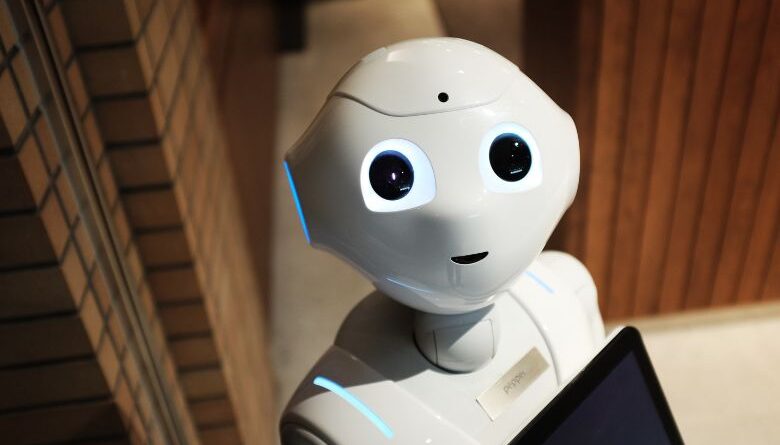Humanoid Robots in Customer Service: Redefining Interaction
Humanoid Robots in Customer Service: Redefining Interaction
In recent years, the field of robotics has seen significant advancements, leading to the development of humanoid robots capable of mimicking human behavior and interaction. Humanoid robots have emerged as a revolutionary solution for various industries, particularly in customer service. This article explores the impact of humanoid robots in customer service, their advantages, challenges, and the future potential they hold in redefining the way humans and machines interact.
What are Humanoid Robots?
Humanoid robots are robots designed to resemble and imitate human movements, appearance, and interaction. They are equipped with advanced artificial intelligence (AI) algorithms, sensors, and actuators that enable them to perform tasks autonomously while emulating human-like qualities. These robots can communicate using natural language, recognize facial expressions, and respond to voice commands, making them ideal candidates for customer service applications.
The Advantages of Using Humanoid Robots in Customer Service
3.1 Enhanced Customer Experience
One of the primary advantages of humanoid robots in customer service is their ability to enhance the overall customer experience. Unlike traditional automated systems, humanoid robots can engage customers in personalized interactions, addressing their queries with empathy and understanding. This human-like touch fosters a positive emotional connection between customers and the brand, leading to increased customer loyalty and satisfaction.
3.2 24/7 Availability and Instant Responses
Humanoid robots can operate round the clock without fatigue, ensuring 24/7 availability for customer assistance. Customers no longer need to wait for business hours to get their issues resolved, as humanoid robots can provide instant responses and support anytime, anywhere.
3.3 Multilingual Support
Language barriers can be a significant challenge in customer service, especially in a globalized world. Humanoid robots equipped with multilingual capabilities can effortlessly communicate with customers in their preferred language, breaking down communication barriers and catering to diverse customer needs.
3.4 Personalization and Data Utilization
Humanoid robots can collect and analyze vast amounts of customer data, allowing them to offer highly personalized recommendations and solutions. By understanding customer preferences and behavior patterns, humanoid robots can create tailor-made experiences that resonate with individual customers.
Overcoming Challenges and Concerns
4.1 Data Privacy and Security
As humanoid robots handle sensitive customer information, ensuring data privacy and security is of utmost importance. Companies must implement robust security measures and protocols to safeguard customer data from potential breaches and unauthorized access.
4.2 Human-Like Interaction
While human-like interaction is advantageous, it also presents challenges. Humanoid robots must strike a delicate balance between being human enough to engage customers effectively without appearing too human and causing discomfort or mistrust.
4.3 Job Displacement and Workforce Impact
The integration of humanoid robots in customer service raises concerns about job displacement and its impact on the workforce. It is essential for companies to implement responsible AI strategies that complement human employees rather than replace them, creating a hybrid workforce that maximizes productivity and efficiency.
Humanoid Robots in Various Customer Service Settings
5.1 Retail and Hospitality
In the retail and hospitality industries, humanoid robots are transforming the customer experience. They can assist customers with product information, guide them through the store, and even provide recommendations based on their preferences.
5.2 Healthcare
Humanoid robots play a vital role in healthcare settings, offering companionship to patients, reminding them to take medications, and providing support to healthcare professionals in tasks like data collection and monitoring.
5.3 Banking and Finance
In the banking and finance sectors, humanoid robots are streamlining customer interactions by handling routine inquiries, processing transactions, and offering financial advice tailored to each customer’s unique needs.
5.4 Travel and Transportation
Humanoid robots are revolutionizing the travel and transportation industries by assisting passengers at airports, providing travel information, and ensuring a seamless and pleasant journey.
Future Potential and Innovations
6.1 Emotional Intelligence and Empathy
Future advancements in AI and robotics aim to equip humanoid robots with emotional intelligence and empathy, enabling them to understand and respond to customers’ emotions effectively.
6.2 Physical Capabilities and Adaptability
Continued innovation may lead to humanoid robots with enhanced physical capabilities, allowing them to perform a broader range of tasks with increased agility and precision.
6.3 Integration with AI and IoT
Integrating humanoid robots with AI and the Internet of Things (IoT) will enable them to gather real-time data and make more informed decisions, further improving their customer service capabilities.
Ethical Considerations in Using Humanoid Robots
7.1 Programming Ethical Decision-Making
Ethical considerations must be embedded into the programming of humanoid robots to ensure that they make fair and morally sound decisions in various customer service scenarios.
7.2 Transparent AI Algorithms
Companies must be transparent about the AI algorithms used in humanoid robots to build trust with customers and prevent the spread of misinformation or biased decision-making.
7.3 Safeguarding Human Dignity and Rights
Humanoid robots should be programmed to respect human dignity and rights, refraining from any actions that may harm or violate individual freedoms.
The Human Element: Humanoid Robots as Assistants, Not Replacements
As humanoid robots become more prevalent in customer service, it is essential to remember that they are meant to assist human employees, not replace them entirely. The human touch and empathy remain invaluable in certain situations, and humanoid robots should complement human efforts, creating a harmonious and efficient service environment.
Embracing Change and Progress
The rise of humanoid robots in customer service represents a significant technological advancement with the potential to revolutionize various industries. Embracing this change and leveraging the benefits of humanoid robots can lead to improved customer experiences and more efficient service delivery.
Conclusion
Humanoid robots are redefining interaction in customer service, bridging the gap between machines and humans with their human-like qualities and capabilities. Their ability to provide enhanced customer experiences, 24/7 availability, and multilingual support makes them indispensable assets for businesses aiming to stay competitive in the digital age. As technology continues to evolve, ensuring ethical considerations and the integration of human and robotic efforts will shape a future where humanoid robots play a pivotal role in enhancing customer satisfaction and driving business success.
FAQs
- Are humanoid robots replacing human customer service representatives? No, humanoid robots are not meant to replace human customer service representatives entirely. Instead, they are designed to assist and complement human efforts, enhancing the overall customer experience.
- How do humanoid robots personalize customer interactions? Humanoid robots collect and analyze customer data to understand individual preferences and behavior patterns. Based on this information, they can offer personalized recommendations and solutions.
- Can humanoid robots understand and respond to emotions? While current humanoid robots can recognize basic emotions through facial expressions, future advancements aim to equip them with emotional intelligence, enabling more nuanced responses.
- What ethical considerations are taken into account in humanoid robot programming? Ethical considerations include ensuring fair decision-making, transparency in AI algorithms, and respecting human dignity and rights in all customer interactions.
- How can businesses integrate humanoid robots into their customer service operations? Businesses can integrate humanoid robots into customer service by identifying suitable tasks for automation, providing adequate training to human employees, and fostering a collaborative environment that maximizes the strengths of both humans and robots.
- AI in Agriculture: Precision Farming and Sustainable Practices





Pingback: Digital Wellness: Striking a Balance with Technology Use | UTHSI 2023